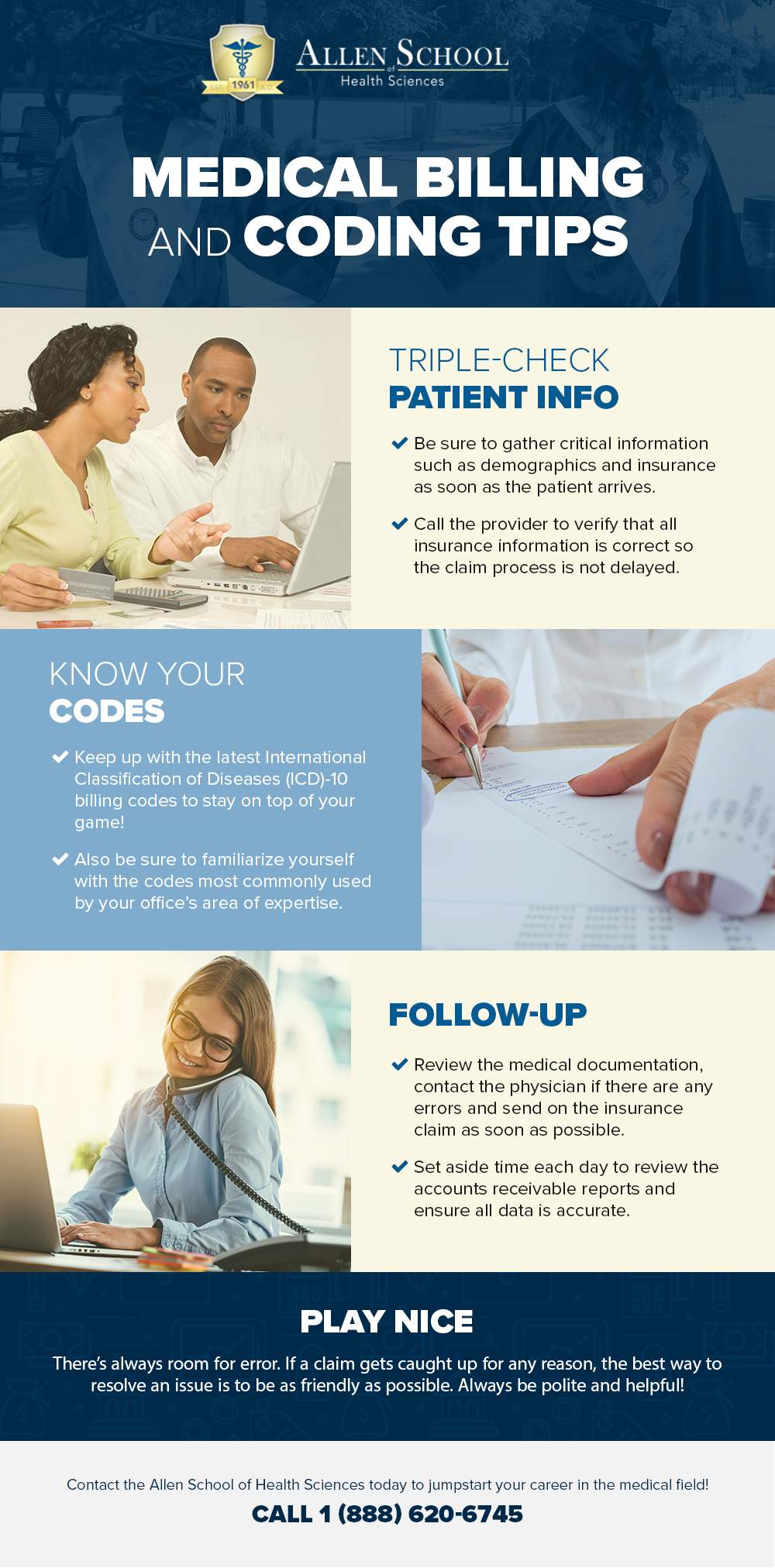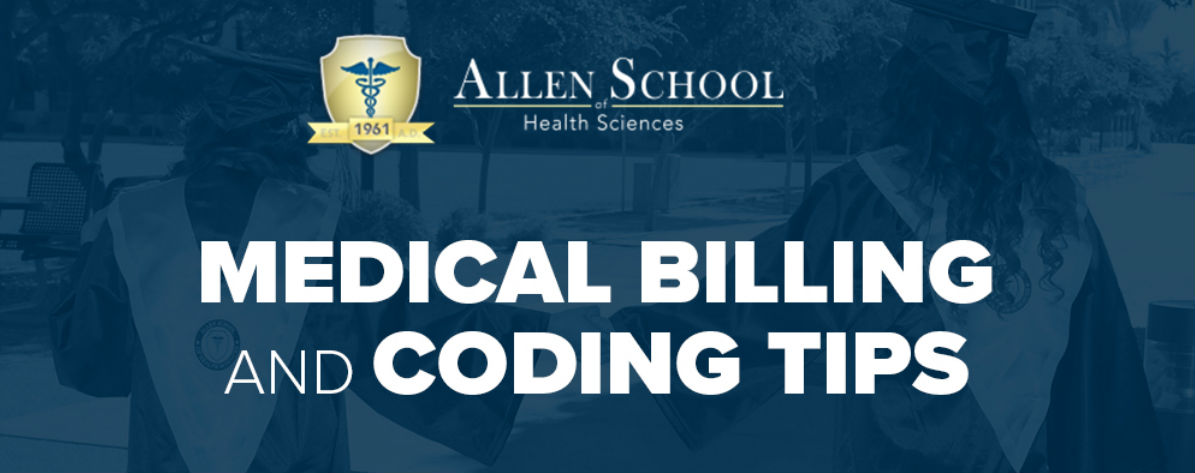Working as a medical insurance biller and coder can be a rewarding career path, though some may find it challenging. Success requires meticulous attention to important details and keeping up with industry-standard acronyms and policies. Even seasoned professionals can make mistakes from time to time. But, despite the occasional difficulties, billing and coding can be a fairly straightforward process as long as you take the time to do everything accurately and precisely. Here are a few tips to keep you level-headed when you’re knee-deep in codes!
Check Patient Information and Insurance
Patient demographics and other important information should be gathered immediately upon arrival. If you don’t already, enforce a rule where all patients must show government-issued identification so you can copy and keep a record of it on-file.
Above all else, be sure that any patient information you enter is completely accurate. An analysis done by NerdWallet in 2013 found that roughly 49% of audited medical bills contained errors and that some medical centers
incorrectly entered more than 80% of Medicare claims.
What’s the number one reason most medical billing claims get denied? Not properly verifying insurance information. It’s always best to directly call an insurance provider to check for deductibles, copayments and verify effective dates of coverage.
One of the most important things to know when coding is, of course, the codes. A billing or coding job is full of different acronyms and abbreviations for a variety of companies, policies and procedures. While you can’t be expected to memorize every single one, it’s best to familiarize yourself with the most common:
- CMS (Centers for Medicare & Medicaid Services): The division of the United States Department of Health and Human Services that administers Medicare, Medicaid and the Children’s Health Insurance Program.
- EDI (Electronic Data Interchange): The electronic systems that carry claims to a central clearinghouse for distribution to individual carriers.
- EOB (Explanation of Benefits). A document, issued by the insurance company in response to a claim submission, that outlines what services are covered (or not) and at what level of reimbursement. Each payer has their own EOB form.
- HIPAA (Health Insurance Portability and Accountability Act): The law, sometimes called the Privacy rule, outlining how certain entities like health plans or clearinghouses can use or disclose personal health information. Under HIPAA, patients must be allowed access to their medical records.
- HMO (Health Maintenance Organization): A health management plan that requires the patient use a primary care physician. In HMOs, patients must seek treatment from the primary physician first, who, if they feel the situation warrants it, can refer the patient to a specialist within the network.
- POS (Point of Service): A health insurance plan that offers the low cost of HMOs if the patient sees only in-network providers.
- PPO (Preferred Provider Organization): A health management plan that allows patients to visit any providers contracted with their insurance companies. If the patient visits a non-contracted provider, the claim is considered out-of-network.
- WC (Workers’ Compensation): U.S. Department of Labor program that insures employees who are injured at work.
Each medical office may use their own codes depending on their area of expertise, but the ones listed above are generally standard across the field. Be sure to keep up to date with the latest coding practices so you’ll never be confused when something unfamiliar shows up on your desk.
Follow-Up
Although you may have a few days of lee-way before you’re required to code and send off an insurance claim, it’s best not to delay. Review the medical documentation as soon as you receive it, so you can contact the physician if you find any errors. Similarly, set aside time every day to review the accounts receivable reports to ensure all claims and their respective accounts are accurate.
Whether a claim goes directly to a payer or to a clearinghouse, there’s always the possibility it will get stuck somewhere along the way. Be prepared to sort out the problem as quickly as possible, but always remember there is a real person on the other side. Politeness and cooperation will get you far; friendliness yields results!
If medical billing and coding seems like the job for you,
contact the Allen School of Health Sciences today. With our Medical Billing and Coding online courses, you can complete your training conveniently from home. You’ll be prepared to take on the responsibility of processing patient data, medical records and billing both patients and insurance companies. We will also fully prepare you to utilize the new ICD-10 coding system that recently went into effect across the nation.



